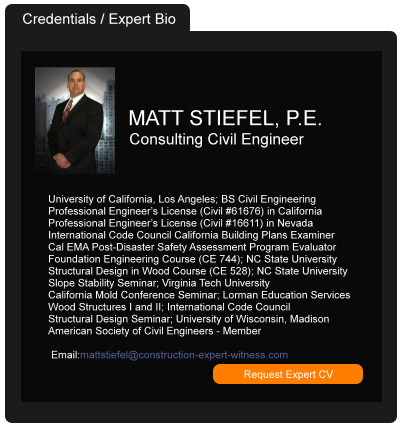Insured Entitled to Defense After Posting Medical Records Online
September 17, 2014 —
Tred R. Eyerly – Insurance Law HawaiiThe insurer had a duty to defend the insured contractor's publication of medical records online, making them accessible to anyone. Travelers Indem. Co. of Am. v. Portal Heathcare Solutions, LLC, 2014 U.S. Dist. 110987 (E.D. Va. Aug. 7, 2014).
Portal specialized in safekeeping of medical records for hospitals, clinics, and other medical providers. Portal was sued in a class action suit filed in New York state court for failing to safeguard the confidential medical records of patients at Glen Falls Hospital. Two patients of Glen Falls conducted a Google search of their respective names, and found a direct link to their Glen Falls medical records.
Travelers provided policies to Portal in 2012 and 2013, obligating Travelers to cover damages because of injury arising from (1) the "electronic publication of material that . . . gives unreasonable publicity to a person's private life" (the 2012 policy) or (2) the "electronic publication of material that . . . disclosed information about a person's private life" (the 2013 policy).
Read the court decisionRead the full story...Reprinted courtesy of
Tred R. Eyerly, Insurance Law HawaiiMr. Eyerly may be contacted at
te@hawaiilawyer.com
The Living Makes Buildings Better with Computational Design
November 12, 2019 —
Aarni Heiskanen - AEC BusinessThe AEC industry has a responsibility and mandate when it comes to addressing significant global challenges in the sector and improving operational practice. Professionals such as Lorenzo Villaggi, Senior Research Scientist at The Living, believe that new design technologies hold the key to better-performing built environments.
“Although I’m trained as an architect, I’ve always had an interest in how technology can interact with and have an impact on design processes,” says Lorenzo. “I’ve developed a familiarity with advanced computational tools and eventually developed my own.”
These computational tools are primarily designed to assist with the generation of design options and improve performance analysis. They range from small systems that help users design faster, all the way to elaborate software that can perform complex, mission-critical tasks.
Read the court decisionRead the full story...Reprinted courtesy of
Aarni Heiskanen, AEC BusinessMr. Heiskanen may be contacted at
aec-business@aepartners.fi
How to Fix America
July 11, 2021 —
Bloomberg CityLabIn 2011, then-President Barack Obama stood in front of the deteriorating Brent Spence Bridge linking Ohio and Kentucky with a plea to Republican leadership: Pass the jobs bill to rebuild America. (It did not pass.) Six years later, when asked about the same bridge, then-President Donald Trump answered “we’re going to get it fixed.” (It did not get fixed.)
It took two trucks colliding on the Brent Spence’s lower deck — leading to a massive fire — just before 3 a.m. on Nov. 11, 2020, for work to begin. A post-crash inspection found the bridge structurally sound, and more than $3 million in repairs were made by year-end. But with traffic volume at around double its intended capacity, much more work is needed to alleviate persistent jams and accidents.
Such has been the state of infrastructure in the U.S. for decades — fixes get put off until they’re absolutely necessary, and U.S. airports, roads and public transportation draw frequent comparisons to those in nations with far fewer resources. Meanwhile, countries in Europe, Asia and the Middle East have leapt ahead with so-called smart cities, high-speed trains and eco-friendly buildings. In 2019, the U.S. ranked 13th in the world in a broad measure of infrastructure quality — down from fifth place in 2002, according to the World Economic Forum’s Global Competitiveness Report.
Read the court decisionRead the full story...Reprinted courtesy of
Bloomberg
“Incidental” Versus “Direct” Third Party Beneficiaries Under Insurance Policies in Which a Party is Not an Additional Insured
April 18, 2023 —
Garret Murai - California Construction Law BlogAs they say, when it rains, it pours. Indemnity and insurance are the “Big Two” when it comes to risk avoidance on construction projects. The next case,
LaBarbera v. Security National Security Company, 86 Cal.App.5th 1329 (2022), involves both. It’s an interesting case, which I think could have gone either way, involving claims by a higher-tiered party that they were a third party beneficiary under an insurance policy in which they were not named as an additional insured.
The LaBarbera Case
The Indemnity Provision and Insurance Policy
In June 1016, Chris LaBarbera hired Richard Knight doing business as Knight Construction to remodel his house in Carmichael, California. The construction contract included an indemnity provision which provided that Knight would defend and indemnify LaBarbera from all claims arising out the remodeling work except for claims arising from LaBarbera’s sole negligence and willful misconduct.
Read the court decisionRead the full story...Reprinted courtesy of
Garret Murai, Nomos LLPMr. Murai may be contacted at
gmurai@nomosllp.com
BWB&O Partner Jack Briscoe and Associate Anoushe Marandjian Win Summary Judgment Motion on Behalf of Homeowner Client!
March 13, 2023 —
Dolores Montoya - Bremer Whyte Brown & O'Meara LLPBremer Whyte Brown & O’Meara, LLP is excited to share that Partner, Jack Briscoe and Associate, Anoushe Marandjian obtained an order for summary judgment in a multi-theory liability action in Los Angeles Superior Court.
Plaintiff suffered severe injuries when he fell off a ladder while performing finish carpentry work at the home of BWB&O’s client. Plaintiff alleged various theories of liability against our client, the homeowner, including that: our client supplied a dangerous and defective ladder that, among other things, was unstable and not tall enough for the job; that the floor was covered with a slippery plastic sheeting hidden underneath construction paper which constituted a dangerous condition; that our client was his “employer” under the Labor Code; and that our client was civilly liable on the basis that he had directly hired Plaintiff, who was an unlicensed contractor. Alternatively, Plaintiff alleged that our client was vicariously liable for the conduct of his general contractor, who failed to maintain worker’s compensation insurance covering Plaintiff.
After several rounds of written discovery, which required extensive attempts to “meet and confer” over Plaintiff’s deficient responses, as well as the parties’ depositions, Mr. Briscoe and Ms. Marandjian filed a Motion for Summary Judgment on behalf of our client on various grounds, including that the Privette Doctrine precluded Plaintiff from recovery against our client and that our client was not negligent (there was no dangerous condition and if there was, our client did not create it or that it existed for a long enough time for our client to have discovered it and remedied it). Plaintiff’s Opposition to our Motion for Summary Judgment included a Declaration from an expert witness alleging various grounds upon which our client was liable.
Read the court decisionRead the full story...Reprinted courtesy of
Dolores Montoya, Bremer Whyte Brown & O'Meara LLP
Boston Contractor Faces More OSHA Penalties
February 21, 2022 —
Scott Van Voorhis - Engineering News-RecordThe head of a Boston-based construction company that lost two workers in a
fatal accident at a downtown Boston worksite last year now faces nearly $2 million in total fines after safety violations on a new project.
Reprinted courtesy of
Scott Van Voorhis, Engineering News-Record
ENR may be contacted at enr@enr.com
Read the full story... Read the court decisionRead the full story...Reprinted courtesy of
Enhanced Geothermal Energy Could Be the Next Zero-Carbon Hero
June 10, 2024 —
Sidney L. Fowler, Robert A. James & Clarence H. Tolliver - Gravel2Gavel Construction & Real Estate Law BlogHydrogen, solar, wind—and even microwave beams from outer space—are a few of the alternative energies being explored as the world strives to cut the cord on carbon emissions. Recently, advancements in geothermal energy technologies appear poised to significantly expand geothermal’s reach. These new methods, varyingly referred to as enhanced, engineered or advanced geothermal systems (collectively referred to here as EGS), have recently made strides in scalability and grabbed the attention of changemakers. If successful, EGS may play a major role in the clean energy transition. The technique creates no emissions and is virtually limitless (it pulls from heat generated by the Earth’s core), and can provide constant baseload power, making it appealing to green-minded investors. This article calls attention to the progress and variety of EGS projects and proposals that Pillsbury sees as part of the ongoing energy transition.
People have long been drawn to geothermal energy, with Paleo-Americans settling at hot springs some 10,000 years ago. In 1892, Boise, Idaho, became the first town to establish a district heating system that piped naturally occurring hot water from underground and into homes. It would take another 70 years for other cities to replicate the feat, but now 17 U.S. districts use such systems, along with dozens more worldwide.
Reprinted courtesy of
Sidney L. Fowler, Pillsbury,
Robert A. James, Pillsbury and
Clarence H. Tolliver, Pillsbury
Mr. Fowler may be contacted at sidney.fowler@pillsburylaw.com
Mr. James may be contacted at rob.james@pillsburylaw.com
Mr. Tolliver may be contacted at clarence.tolliver@pillsburylaw.com
Read the court decisionRead the full story...Reprinted courtesy of
Sweet News for Yum Yum Donuts: Lost Goodwill is Not an All or Nothing Proposition
October 07, 2019 —
Josh Cohen - California Construction Law BlogLast month a California Court of Appeals clarified that a property owner facing eminent domain is only required to prove partial loss of goodwill, not total loss of goodwill, to be entitled to a trial on the amount of goodwill lost.
Yum Yum Donuts operated a shop in Los Angeles that was subject to eminent domain by the Los Angeles Metropolitan Transportation Authority (MTA) to make way for light railway track. At trial, Yum Yum sought loss of goodwill as part of its condemnation damages under Code of Civil Procedure section 1263.510.
At trial the MTA’s expert testified that Yum Yum could have reduced its goodwill loss if it relocated to one of three alternative locations rather than simply closing the shop. But the expert conceded that even if Yum Yum had relocated, it would have lost some goodwill. Yum Yum refused to relocate, arguing that its relocation costs would render the move unprofitable. The trial court found that Yum Yum’s failure to mitigate its damages barred Yum Yum from having a jury trial to recover any goodwill damages.
Read the court decisionRead the full story...Reprinted courtesy of
Josh Cohen, Wendel, Rosen, Black & Dean LLPMr. Cohen may be contacted at
jcohen@wendel.com


































































